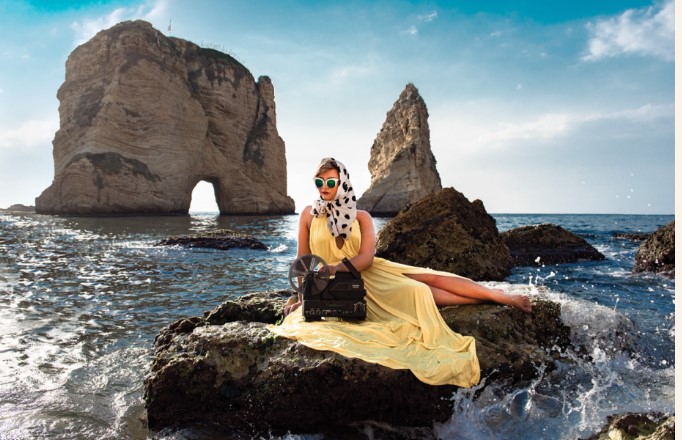Lebanon remains in the grips of multiple crises, with the devastation of the 2020 explosion and a dire financial collapse compounding the struggles of a country already weakened by the pandemic. These compounded shocks have left the nation on the edge, while its last remaining sectors fight for survival. In this tragic scenario, one thing stands clear: the Lebanese people’s resilience continues to shine, but their anger and frustration have escalated to new heights, even reaching the younger generation.
The growing economic hardships have led to incidents like the recent bank robbery carried out by Sali Hafiz, a young interior designer, who armed herself to recover her frozen assets. This moment encapsulates the widening gap between Lebanon’s social classes and highlights the dramatic inequality in a land where, ironically, the rich and the poor now share the same struggles. Amidst this crisis, art and fashion continue to hold significant meaning, acting as a form of resistance.
Before Lebanon’s current turmoil, the country’s haute couture industry was flourishing, with Lebanese designers making their mark globally. Figures like Zuhair Murad had brought Lebanese fashion to international acclaim. However, the blast that shook the nation in August 2020 left a scar on the industry, with Murad’s workshops left in ruins. Yet, in true Lebanese spirit, Murad found a way to rise above the destruction. He turned the mesh fabric from the scaffolding of his damaged building into a symbol of remembrance and resilience. He created a tribute dress for the victims and held an NFT charity sale called “Redress Lebanon,” donating the proceeds to the NGO IDRAAC, which focuses on mental health support in Lebanon.
On the same street, the renowned fashion designer Elie Saab, who had already made a name for himself internationally, also faced the destruction of his workshop. Despite the setback, Saab’s commitment to Lebanon remained unwavering. He rebuilt his workshop and soon presented a new collection, emphasizing his determination to stay and continue his legacy. Many Lebanese shared this sentiment, lamenting the absence of the diaspora during these trying times, and hoping that others would stay and help rebuild their homeland.
While Lebanon’s fashion industry battles through its own wounds, another paradox emerges from the ongoing crisis: the devaluation of the Lebanese pound. The plummeting currency has created an opportunity for wealthy individuals abroad to invest in luxury real estate, especially targeting the Lebanese diaspora. The booming real estate market, however, often benefits those with resources abroad, leaving local residents out of reach of these developments. This raises an important ethical question: Is it genius to profit from a crisis, or is it immoral to capitalize on the misfortunes of one’s own people?
In contrast to this, many artists and creatives are responding to the crisis head-on, channeling their pain, loss, and anger into their work. Through their art, they seek to mourn the devastation of Lebanon’s heritage and landscape, while also standing in defiance against the ruling class and their neglectful policies. The work produced during this period acts as a cry for justice, a way to document the wounds of the nation, and a reminder that the mistakes of the powerful will not be forgotten.
The pain of loss and destruction has left deep scars on the soul of the country, yet the Lebanese people remain determined to rebuild and find new ways to express their collective grief. Lebanon’s journey is a modern-day Sisyphean struggle, as its citizens are forced to continually reconstruct their world amid a landscape of fragmented memories and burned ruins. The artistic and fashion industries in Lebanon, while wounded, continue to stand as powerful symbols of defiance and resilience in the face of overwhelming adversity.

